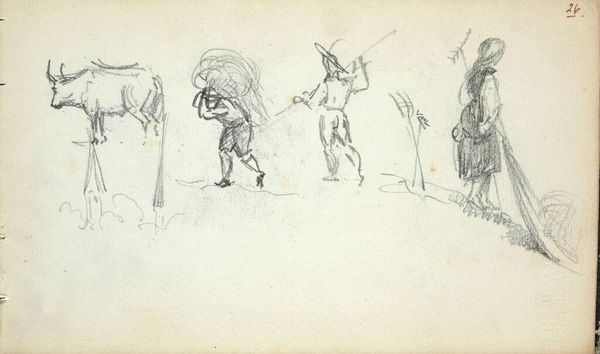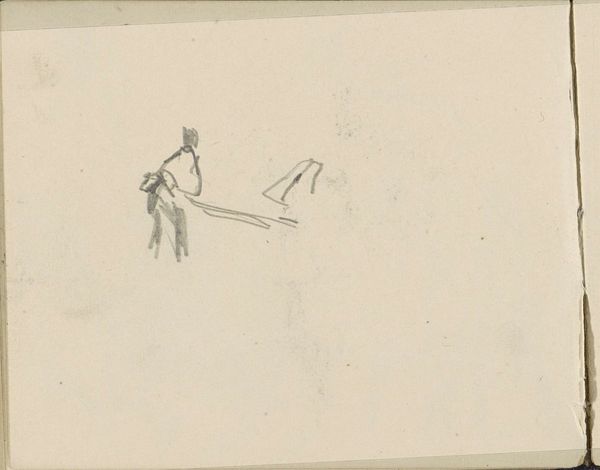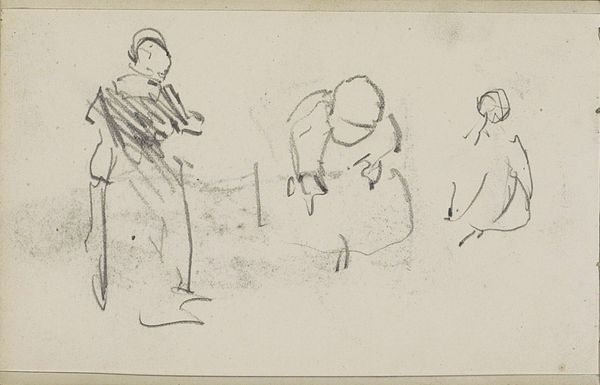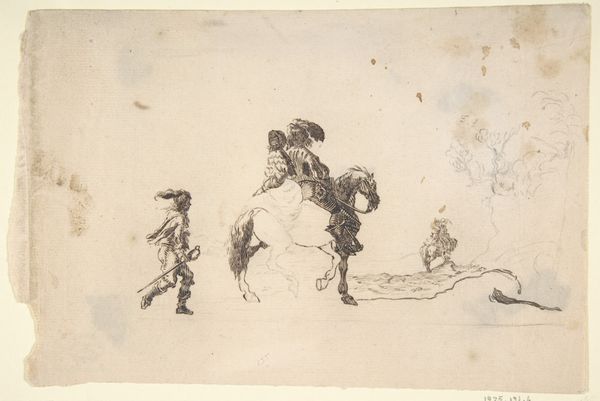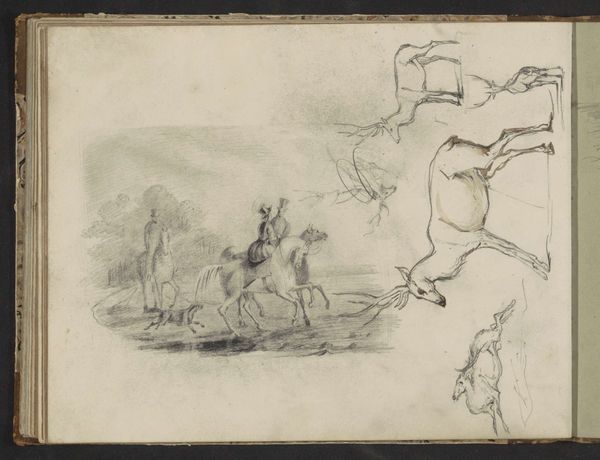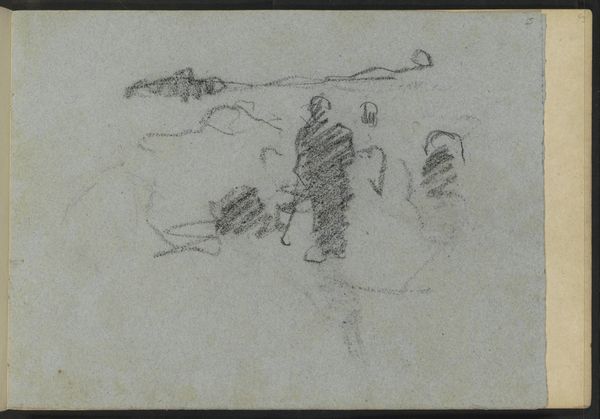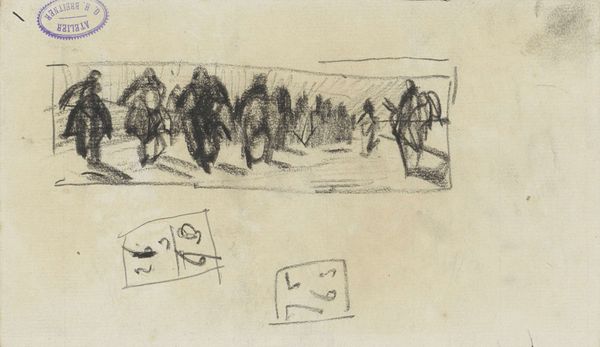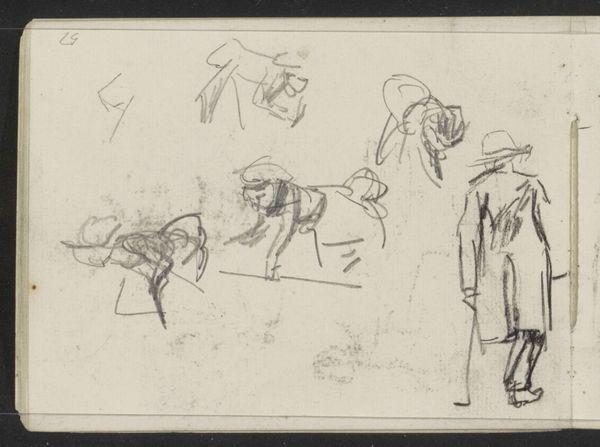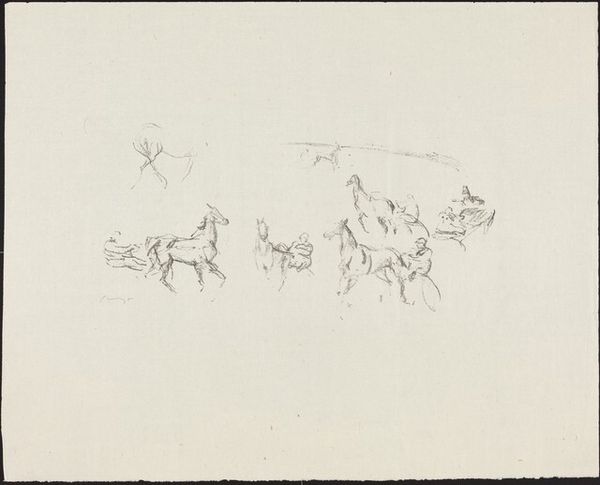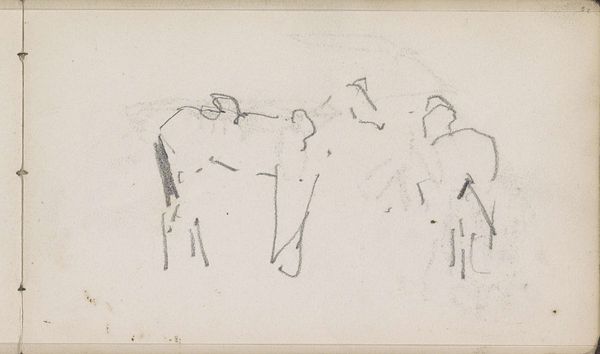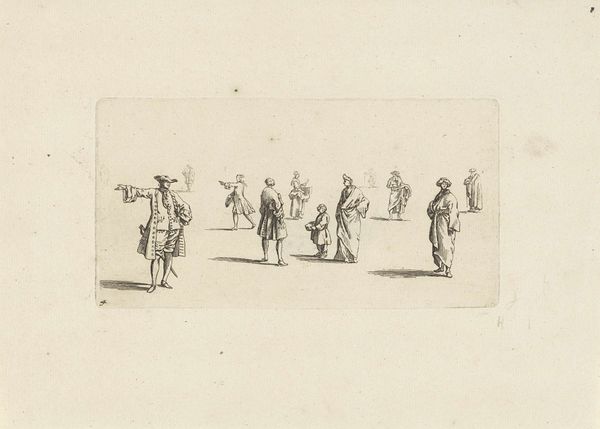
Copyright: Rijks Museum: Open Domain
Editor: Here we have Isaac Israels’ “Standing Figures,” created sometime between 1875 and 1934. It’s a graphite and pencil drawing housed here at the Rijksmuseum. It’s striking how minimal it is; just a few lines, really, yet they manage to convey so much about these figures. What do you see in this piece? Curator: I see the beauty of suggestion, really. Israels wasn't interested in capturing every detail. Instead, it is the quick gestures that imply form and movement. There’s an immediacy to the piece, a sense that Israels was trying to capture a fleeting moment. What do these figures make you think of? Editor: They feel very contemporary to me, despite being potentially from the late 19th century! I get a sense of everyday life, just people going about their day, captured in a very fleeting, almost nonchalant manner. Is that typical of Impressionist works, especially in drawings like this? Curator: Exactly! The everyday was the muse. Think about the technological and societal shifts during the Impressionist era. Photography was on the rise, and this may have prompted artists to explore how quickly can they represent what their eyes see. Editor: So, less about capturing perfect reality and more about capturing the feeling of a moment? It's fascinating how few lines can convey so much. It makes me wonder what stories these figures hold, even though we only see them for a split second on paper. Curator: Precisely. And sometimes, it's in those fleeting glimpses that we find the most enduring truths. It reminds us that art doesn't always have to shout; sometimes, the whispers are the most powerful. What will you take away from looking at this sketch? Editor: I guess I’ll appreciate that “less is more” can be so effective! Also, now I want to find more sketches to see how other artists captured those brief and ordinary instances in life.
Comments
No comments
Be the first to comment and join the conversation on the ultimate creative platform.
